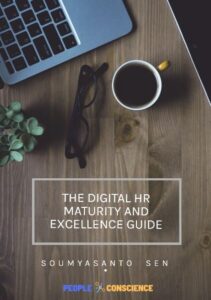Tennis legend Rafael Nadal in his auto biography writes
“Before the start of every game I place my two large energy drink bottles down at my feet, diagonally aimed at the court. Is it a superstition?, of course not, else why would I keep repeating the same thing irrespective of a win or defeat.
Through this gesture I am actually ordering my surroundings to match the order I seek in my own head” This gives me a feeling of control over my environment, for me it’s the singular most important factor for being mentally “engaged” in any match!
Engagement!
“A feeling of control over our immediate environment”. Human engagement, a complex emotional state and carries multiple connotation. But doesn’t the tennis legend nail the core essence?
Amusingly, the Oxford dictionary focuses on the term engagement in reference to marital relations and in this context its meaning is closer to “commitment rather than control”, hopefully! , but be as it may that definition too is only a part of its essence.
A sufficiently encompassing technical definition from an organizational psychology prospective is generally accepted as
“Quantifying human involvement towards defined objectives”. Within the scope of this definition a host of influencing factors could be accommodated, provided the objectives are well defined in the first place and involvement can be quantified, does that hold good for HR?

Let’s explore! Engagement through the eyes of HR aka “Employee Engagement”
Engagement in context to HR
Josh Bersin says “employee engagement is paramount to attracting and retaining talent – and remaining competitive in the global market. Research shows a direct link between employee engagement and corporate performance”
Yes of course, the crux of engagement in HR needs to be centric around employee productivity; bills need to be paid, sans doute Monsieur Bersin!
But there is also an interesting counter point here
Global pioneer of workforce analytics Greta Roberts says “engagement is not Performance and there could be dangerous correlations, it’s a tricky metric”
Possible, provided the hypothesis of no or negative correlation (against productivity) is formed after a thorough analysis, followed by long term observation. This is often an accepted constraint in organizational psychology/HR and sure Greta Roberts is advocating the same here.
The overwhelming majority does advocate a strong relationship. American Business Magazine writes “Research has shown employees who identified themselves as happy in their positions are productive 80 percent of the time at work. Comparatively, employees who identified themselves as unhappy were only productive 40 percent of the time.”
Employee Engagement is the soul of HR and a human cultural aspect applied to business, scoring it against short term business productivity may limit its scope and give a false hypothesis.
Estimating Employee Engagement
Maslow’s theory (hierarchy of needs) is an interesting starting point. Many of us are familiar with this through our business management courses. This time tested theory of “human psychology” provides key insights for understanding human behavior in the workplace.
All the six aspects of the pyramid manifest in some form within the course of the professional carrier of employees and their specific needs within the workplace.
Interestingly these aspects could even manifest differently for star performers, senior level employees or specific personality types. Individuals might have different priorities, perceived status quo and rate the same aspects in the engagement survey differently and it’s useful to identify and study these subgroups.

A traditional approach has been to accumulate survey data on factors estimated to influence employee engagement levels and then calculate metrics/ ratios for evaluation of engagement health. Any hypothesis for improvement initiatives are derived via variance (survey ratings) between different individuals and/or same individuals at different periods.
Key interest survey points have been centric around individual goals, personal space, work life balance, clarity of mandate, transparent assessments and judgments, channels of communication, compensation and benefits, carrier path, work recognition etc.
A process characteristic or component that has a direct effect on whether the overall process is perceived by the employee engagement (in this case) to be of acceptable quality. Identification of specific, measurable critical to quality (CTQ) characteristics is essential for meaningful and measurable business process improvement.
Below shows the traditional flowchart to determine the CTQ for employee engagement.

Times are changing, engagement initiatives need to be viewed from a continuous process improvement perspective, for instance the Six Sigma or CMMI point of view.

Above shows a process flow of data-driven Employee Engagement.
Andrew Marritt writes “Perceptions change over time. As analysts we built a systems dynamics model for engagement and plugged our data in. We can therefore use it as a management simulator to understand what we need to change to improve what we care about – engagement.”
“Observations spread over a time frame”. In statistical terms what Andrew refers to here is centric around a periodic paired t test.
In addition to these ideas, there is also a lot of inherent disparity in the nature these factors for instance “work life balance” and “carrier growth avenues” and it might be a good experimental idea to reduce all possible factors them into principal components (via statistical PCA analysis or clustering).
Such computational approaches could be employed to gather deep insights from a multitude of angles. Finally one size fits all. Re-engineering the HR policies based on the above findings should ideally be specific to identified groups and their behavioral patterns vis a vis organizational goals.
New Ideas & research pertaining to engagement in HR
An evolving idea is that the estimation of the implicit benefits like health improvement of employees, happiness index of employees, variances in grievances and legal cases, company brand value, may not be necessarily be correlated with short term employee productivity and needs to be observed long term
A 2012 review of more than 200 studies found a connection between positive psychological attributes, such as happiness, optimism and life satisfaction, and a lowered risk of cardiovascular disease.
– Psychological Bulletin.”
Josh Bersin says “engagement programmers help employees perform better in their daily jobs, improve their career planning and help them become happier and more engaged employees. re-imbursement for hourly workers and early career management programs are becoming popular again.”
These aspects may also have implicit benefits in terms of reducing long term attrition, improvement in referral programs, higher glass door rating (company and HR brand value) and other long term hidden benefits.
The below diagram used in this article shows the deploying Engagement Analytics over time period. From Proof of concept till establishing Analytics in an organization or culture.

Let’s also explore a few advanced statistical techniques that can be periodically applied to engagement survey data. These are typically used by practitioners in organizational psychology for deep analysis and can be seamlessly adopted to HR. It is handy for HR to have a high level overview.
HR Engagement Survey Data Challenges.
So how do the HR Data Analysts/ Organizational Psychology Analyst keep themselves busy?
- Does HR have a hunch of many hidden subgroups of employees within the organization (different scoring patterns in the engagement survey) – Discriminant Analysis
- HR needs to know the engagement survey factors that correlate with each other and with “employee productivity” or even a third explanatory factor- Deep insights required – Factor analysis, Principal component analysis
- HR needs to check variance (variability) of identified factors in order to find its relevance or compare same surveys conducted at different times – ANOVA/MANOVA/T test/paired t test to the rescue
- Based on findings HR needs to progressively field test new ideas in employee engagement and predict its impact – DOE (factorial design of experiments), period review via ordinal logistic regression
- HR needs to tap deep insights into the employee mindset– open ended descriptive answer based questions and insights via deep NLP (natural language processing) analysis, trust me this can get truly deep!
- Innovation – design creative ratios (an HR Statistical analyst can get really creative here), metrics and employee engagement, gamification of the workplace
Employee engagement surveys are centric around questions like iteration, feedbacks, job alignment; clarity of mandate, work life balance, but a lot more can be accommodated
Summing Up Employee Engagement
It’s critical to take a balanced, long term approach to employee engagement and asses it from holistic prospective and not short term productivity alone.
The core idea employee engagement analysis is to keep employees invested in the business and also keep HR relevant and empowered within the organization itself.
It’s important to look out for over-complexity emphasize on actionable intelligence and ease of implementation and maintain proper and timely records.
The Ethos and culture of the very origination is based is on the idea of engagement and it’s the primary responsibility of HR to be its guardian, exactly what engaged us to write this piece
Look forward to continued engagement.
Contributed by Raja Sengupta & Soumyasanto Sen
Raja Sengupta is a Data Scientist, Statistician, and Researcher on Computational Linguistics (specialized for HR). he has 17+ years of research and consulting experience in the entire spectrum of applied statistics, analytics, Six Sigma, programming, and NLP. This includes experience in project management, operational research and Six Sigma in HR/Organizational psychology.
Soumyasanto Sen is a professionally Consultant/Manager/Advisor/Investor in HR Tech. He has 12+ years of experiences focusing on Strategies, Analytics, Cloud, UX, Security, Integration, and Entrepreneurship in Digital HR Transformation.
Original Post on Analytics in HR




